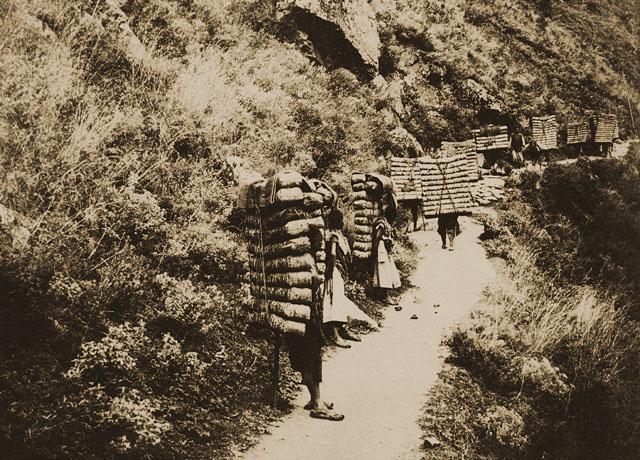Tea and Horse Trail offers journey back in time

Traders and their mules carry tea, salt and other commodities along the ancient trail.
Among the mountains and hills in Southwest China, there is a network of paths formed in the footsteps of people and horses. It links Sichuan Province, Yunnan Province and the Tibet Autonomous Region, stretching across Nepal, India and West Asia, while even reaching the Red Sea coast of West Africa. For thousands of years, numerous mabang (mule-drawn carriages), or caravans led by traders traveled this road carrying commodities including tea, salt and sugar bound for Tibet.
This is the chama gudao (Ancient Tea and Horse Trail, cha for tea, ma for horse, gudao for ancient trail), one of the world’s highest and most precipitous ancient roads which carries and spreads civilization and culture. In ancient times, people in Sichuan and Yunnan provinces exchanged tea for horses or medicines with people in Tibet. The tea, medicine and other commodities were transported by mabang, and thus the pathway was called “chama gudao.” The ancient road’s greatest export was arguably the transmission of civilization.
Chama gudao was the first trade path finally overcoming the Roof of the World, a term that refers to the Himalayas, the Pamirs, the Tianshan Mountains, the Tibetan Plateau and the Hengduan Mountains. Due to its rugged terrain and harsh climate, the Roof of the World used to be a natural barrier for connecting civilizations in the hinterlands of China. Chama gudao offered the first path finally crossing the most dangerous section of the Roof of the World, the interior of the Hengduan Mountains, successfully connecting Tibet with Yunnan and Sichuan provinces.
Besides the dangerous natural environment and climate, ethnic groups along chama gudao and their relations were also complicated, resulting in constant conflicts between different peoples with varied languages and cultures. Nevertheless, chama gudao was never interrupted in history since coming into being; rather it activated already-existing paths in regions of the Roof of the World and formed an even larger network of paths.
The key element for sustaining the vitality of chama gudao is tea, typically traded in bricks and carried by carriages. Around the Tang Dynasty (618–907), tea was introduced to Tibet and soon became an indispensible part of people’s lives. Strong demand for tea made it necessary for carriages to cross the Hengduan Mountains all year round, hence forming chama gudao.
The other reason why chama gudao was never interrupted is that one network of paths was formed. Along the main path of chama gudao, there were many big cities and towns. These were major places for trading of tea. Every city or town was just like a node. The branch paths carried tea to mountains and forests and pastures in remote areas, thus forming a network of paths.
